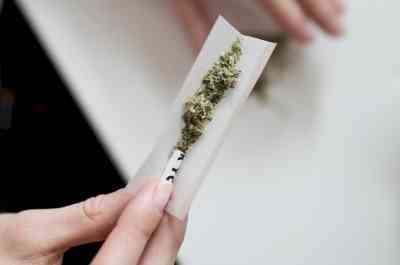Easy availability fuelling a dangerous habit among the very young
A newspaper in one hand and a cup of tea in another is how we visualise our parents or grandparents right after they wake up. Or at least this is what the movies show! For some, the day kicks off with a cup of hot, strong coffee or tea and for some, there are healthier options.

SUPRIYA RAMESH
New Delhi, Dec 17 (IANS) A newspaper in one hand and a cup of tea in another is how we visualise our parents or grandparents right after they wake up. Or at least this is what the movies show! For some, the day kicks off with a cup of hot, strong coffee or tea and for some, there are healthier options.
Nowadays, the scenario seems to be changing. As easily available as a coffee packet in the city, drugs are being supplied, sold, peddled, scored, and consumed among youngsters.
Substance abuse has become common and we can see the cases rising rapidly due to the easy availability of different forms of drugs. Though the most common age group afflicted with substance use is 15 to 35, as young as eight years to as old as 60 can be seen using it.
According to the United Nations Office on Drugs and Crime (UNODC) report, 2022, young people aged 15-16 have a global annual prevalence of cannabis use of 5.8 per cent, compared with 4.1 per cent of the population aged 15-64.
Young people typically report a higher level of drug use than adults, and in many countries, drug use levels among young people are higher today than in earlier generations.
Moreover, harmful patterns of drug use likely increased during the pandemic. Cocaine production is at a record high, and seizures of amphetamine and methamphetamine have skyrocketed, as per the UNODC report.
While few cases come to light and many go underreported, it is sadly true that many children and youth are taking to substance abuse with time.
Other than easy availability and access, other reasons youngsters are possibly falling for, are "emotional problems in this age group, reduced parental supervision and subjective feelings of alienation with the parental group, being increasingly more vulnerable to peer pressure and a keen drive to be seen as cool or rebel," Paramjeet Singh, Senior Consultant Psychiatrist, PSRI Hospital, New Delhi, said.
He said social media representations also add to the pressure and social isolation, higher impulsivity, etc are other important co-contributors.
Mantosh Kumar, Senior Consultant, and Clinical Lead, Mental Health and Behavioural Sciences, Fortis Memorial Research Institute, Gurugram, pointed out that any family history of substance use, the inherent nature of adolescents to try, experiment and explore their environment including the use of the substance and lastly any mental health issues like existing anxiety or depression which can lead to substance use, could be other important factors.
A lot of us like to gel and chill with friends and colleagues over a simple 'chai-sutta' break. While a few people have control over their nicotine consumption, few fall prey to even harder drugs slowly. Smoking weed has become more of a habit like any other everyday thing in college, especially for students in hostels or living alone.
The habit usually begins with 'one try, one shot'. It starts under peer pressure, angst or frustration, or as self-medication to a negative emotional state or event.
"The usage increases over time and the person is no longer in control of the intake. The person often takes substance despite not wanting to, either out of withdrawal (symptoms when a substance is stopped and the body reacts negatively to these reduced levels) or craving (where the person is unable to control his desire to procure and take the substance)," Singh said while pointing out that despite awareness of negative consequences to self and others, the person continues with the usage.
Moreover, this tells us that the use of any substance leads to certain changes in the brain's reward pathway, which is connected to areas of the brain that control behaviour and memory.
"If a functional magnetic resonance imaging (MRI) study were to be conducted to see what happens to the brain on substance, it would highlight how the brain releases huge amounts of dopamine which is unnatural for the brain to experience," Kumar explained.
He said that neurobiologically, it means that an adolescent brain lights up very differently and it gives the high or the rush. It leads to the need for trying the substance again and again to feel that same high and hence the abuse pattern emerges.
Singh said: "The numbers of youth with substance use disorder seen by me can be between 15-20 per week. The most common substances of abuse are alcohol, cannabis/weed, solvents, opioids, LSD, etc."
These days, there are all kinds of drugs widely used and available to almost anyone on demand in colleges. Young kids have access to acids and pills, though weed remains the most popular among all of them. There are exclusive communities for these "stoners" where they meet often and "chill". Marijuana has kept up to its name as a recreational drug.
"Once you get into these communities, you will realise that almost everyone uses drugs. I remember this guy from my college hostel who used to go score for us whenever we were running out. Imagine one person buying weed for a large group of potheads, that's an easy 10 years in jail if caught. We probably didn't realise it then, but I'm sure we wouldn't have cared either way," said a 24-year-old who works as a graphic designer.
"LSDs are more of party drugs. You don't just put one on and then go about your life. It's for music events, weekends, when we go on trips or parties where we really wanna live in the moment," another fresher said.
"LSD, meth and Ecstasy were the most popular ones during my years. These were also available quite easily and anyone from the "stoner" communities could hook you up with "their guy", though they're not that cheap when you compare them to weed," he said.
Over a period of time, the substance takes over the brain, mind, and behaviour of the individual and a growing brain is very susceptible to it.
"The synapses that are the connections between the nerve cells in the brain, are not well-formed till the age of about 25 years. Any use of substance below this age group damages these synapses and results in changes in thought process and behvioural disturbances," Kumar said.
He added that these manifest in the form of impulsive behaviour, poor regulation of emotional control, disturbances in memory and concentration, and high risk of dependence on substances in the future.
He said: "In real life, it translates to poor school performances, dropouts, loss of job or inability to work in steady jobs, poor relationships apart from physical health consequences."
Every drug abuser's psyche could be different. There are behvioural changes that are observed in people abusing drugs. However, some commonly seen attributes are impulsivity, social isolation, tendency to be affected by peer pressure, denial or minimisation of drug use, irritability, aggressive behaviour, and so on.
"Changes in mood in the form of depression are also common. And rarely engaging in criminal activity is also seen," Kumar said.
"They need to be helped with a calm and non-judgemental approach. Drug use is the problem and not the individual. Not focusing on blame is an important aspect of helping," Singh added.
Getting rid of this habit can be difficult but definitely not impossible. Some do reach out for help sooner and hence the chances of recovery are much higher for them. Kumar said that the awareness that the substance is impacting their physical, mental and psychological health is present and hence they either reach out to their parents or trusted friends.
He suggested: "The treatment includes pharmacotherapy and psychotherapy along with family interventions. This can either be done in an outpatient setup or in an inpatient setup in a rehab centre."
Sometimes, even rehab does not work and such cases need specific treatment. Relapses or falling down again can happen, however that should not discourage one from seeking help. There are even specific ways to treat different drugs and substances.
"Admission or hospitalisation is not necessary for each case. An individualised treatment plan is made for each person different from the last patient. Treatment including medication and therapy/counselling works well. With a relapse, we can learn again and better and try harder. If you are trying, you are not failing," said Singh.
"Continuous follow-up with the treating team ensures that they work on relapse prevention programmes. Supportive treatment with a focus on family is also helpful. Relapse does happen in a few instances but it is managed again with effective therapeutic approaches," Kumar added.
Talking about prevention, it happens when strategies are placed at multiple levels. With the government placing stricter laws and ensuring enforcement around the selling of substances to minors can be helpful.
Working on child-parent communication, monitoring of the child's behaviour, and supervision can be carried out to prevent youngsters from substance use and abuse.
"More awareness programmes at schools should be included in the curriculum for the students and teachers to bring about the knowledge," Kumar concluded.


 IANS
IANS 










